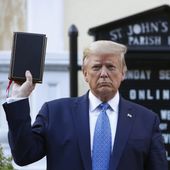OPINION:
FOOTBALL FOR A BUCK: THE CRAZY RISE AND CRAZIER DEMISE OF THE USFL
By Jeff Pearlman
Houghton Mifflin Harcourt, $28, 384 pages
In recent years, the National Football League (NFL) has been mired in numerous controversies, from players who kneel during the national anthem to the long-term health effects of concussions on players. In 1982, the challenge to the NFL was the emergence of the United States Football League (USFL).
Those who remember the short-lived USFL will enjoy New York Times sports reporter Jeff Pearlman’s raucously funny book, “Football for a Buck: The Crazy Rise and Crazier Demise of the USFL.” The book had its origin as a 40-page, single-spaced term paper Mr. Pearlman wrote in high school.
The USFL was the brainchild of Louisiana businessman David Dixon, who felt the NFL had grown boring. The USFL would offer fans more excitement with splashier marketing. For example, the Tampa Bay Bandits gave movie star Burt Reynolds a 10 percent ownership stake in the team in exchange for using his name in the team’s marketing. It would change some of the rules, such as a receiver would only have to have one foot inbounds to record a complete pass. While the NFL frowned on excessive celebration following a touchdown, the USFL encouraged it.
When the league began to organize, Mr. Pearlman recounts that league executives had a slow-growth strategy. Teams were added in key media markets, including New Jersey, Philadelphia, Chicago and Los Angeles. In order to gain credibility, USFL teams began to hire former NFL coaches, including George Allen, who had coached the Washington Redskins and the Los Angeles Rams.
“Football for a Buck” recounts some of the wacky tryouts some of the teams held. One player who had a dismal tryout with the Chicago Blitz walked toward the general manager, as all of the successful hopefuls had done, and signed a contract. Another prospective player demanded permission to climb a fence to try out. There were players who smoked in the huddle and on the sidelines. There were players who drove lousy cars and who fought with other players and their coaches.
One former NFL kicker, Tim Mazzetti, was working as a television news reporter. When he learned of the USFL and the possibility of a return to professional football he called the office of the Birmingham Stallions and was quickly dismissed as a crank. When he called the Boston Breakers someone recognized his name and hired him over the phone.
The USFL came into its own when the New Jersey Generals signed Herschel Walker, the University of Georgia star and 1982 Heisman Trophy winner. The NFL had a longstanding, unwritten rule against recruiting underclassmen. The USFL threw that policy out the window. J. Walter Duncan, the Generals owner, was aggressive and persuasive. Even Mr. Walker’s mother claimed that if he were injured in his senior season, it would dash his dreams of playing in the NFL.
The Generals offered Mr. Walker $1 million and a stake in an oil well. When the owner came to Mr. Walker’s apartment to sign the contract, he and his fiance’ were playing Space Invaders on the Atari 2600 game system.
After the USFL’s inaugural season, Mr. Duncan sold the New Jersey Generals to a brash, young Manhattan real estate developer, Donald J. Trump. Mr. Pearlman leaves no doubt as to the disdain he harbors for the future president. In his first appearance in “Football for a Buck,” Mr. Pearlman notes that anyone who visited Mr. Trump’s office in Trump Tower had to watch a 15-minute promotional video about his company and what Mr. Trump had done in reshaping the New York real estate market.
Mr. Pearlman refers to Mr. Trump as a “football moron” and quotes many others affiliated with the USFL, including other team owners, who freely spouted their dislike for Mr. Trump.
Mr. Trump later filed an anti-trust lawsuit against the NFL, alleging that there was collusion to keep the USFL from expanding into other cities and preventing the upstart league from securing deals for television coverage. The USFL prevailed at trial and was awarded damages in the amount of $1, thus giving the book its title. This proved to be the death knell for the innovative, yet troubled league.
Mr. Pearlman deserves credit for extracting so many entertaining sports stories that will remind football fans of this unique episode in football history. The reader will come away from this book with the idea that the USFL had potential, a plan for growth and a sense of regret that the league lasted only three seasons. However, readers may not agree on where to assign blame for the league’s downfall.
• Kevin P. McVicker is vice president of Shirley & Banister Public Affairs in Alexandria, Va.




Please read our comment policy before commenting.